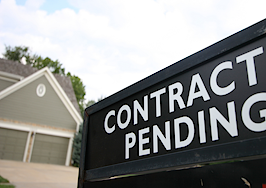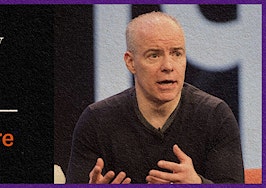- Low- and middle-income areas that were devastated due to lots of short sales and foreclosures now have low supply and are seeing healthy appreciating markets.
- Larger homes were the trend of the late 1990s and 2000s; the next generation has endured a different financial past, which curbs demand for those larger homes.
There are two major trends occurring in real estate that will affect certain areas of the market more than others. But, bottom line, these are trends that will become abundantly clear over the next few years.
Empty nesters are downsizing
The first major trend is that empty nesters are downsizing. Empty nesters are parents who once had a house full of children and are still living in a home that was built for a large family.
The dark years of the real estate market forced these empty nesters to hold onto the family house longer than expected, and now, they are left with large utility bills, landscaping expenses for more land than they need and maintenance expenses for unoccupied rooms and space.
This is a trend that became apparent as I met with more than 400 unlisted homeowners looking to sell over the past couple years.
In addition, we had more than 250,000 visitors to our website, and more than 5,000 filled out a form informing us of their intentions in moving to Arizona and buying their next home. This is what the empty nesters we talk to are wanting to do: downsize.
The downsizing of empty nesters has a greater meaning. When I say it, people typically reply with “that’s normal,” and they don’t necessarily understand that the trend of downsizing has more meaning, namely the major effect downsizing is having on the luxury housing market in many cities including mine.
What downsizing really means
Downsizing used to be limited to the size of the home, but now it is the conscious effort to reduce the total cost of ownership. Therefore, the secondary meaning of downsizing nowadays is that empty nesters are having to adjust to their new retirement budget.
The baby boomers and empty nesters lived through a very affluent time in the U.S.’s economic growth. The ’80s and ’90s were good years to own stocks and real estate. This has created a large affluent upper-middle class allowing these people to upgrade and upsize through the latter part of their working years.
These folks have prepared for retirement but did not expect that they would be living into their late 70s and 80s, or longer; and this stretching of their lifelong savings is causing them to have to be more fiscally responsible to make sure they do not outlive their money.
The baby boomer group is significantly larger than the group looking to replace them in their houses. This is leading to an abundance of non-motivated luxury and large homeowners looking to sell their home.
A decade ago, people lived in their homes an average of five years. Now that average, due to the downturn in housing, has lengthened to closer to almost 10 years.
According to the National Association of Realtors’ Profile of Home Buyers and Sellers, many buyers are predicting they will be living in their next home for 15 years. This affects a large category of people and affects the types of homes they want once free of their family-sized home.
The empty nesters desire less property and/or no interior stairs or steps, as well as lower-priced homes that are new or updated, as they are trying to minimize the expenses of ownership.
Homesellers are frozen
The challenge this trend of empty nesters downsizing presents to homesellers is they have created the second major trend in real estate. Homesellers are frozen.
Frozen is a term I have coined as I have met with close to 200 homeowners each year in the past two years, mostly in the luxury market.
Homesellers have a certain price they believe their house is worth, and these sellers are willing to hold out for what they believe they should get for their home. They typically owe very little on their home, or they have no mortgage, so they can wait patiently for it to sell.
These sellers simply would like to trade in their older, often dated, larger home for a newer smaller one that’s closer to city amenities.
These sellers are not desperate; they are not going to cause much turmoil in the market, as would a super-abundance of supply, because they don’t have to sell and will pull their home off the market if they do not get their desired price.
The challenge is these people as a group have contributed to over-supply in the luxury markets for larger, dated homes, which is causing “squishy” or soft, flat markets.
The dark years eliminated the homes that were underwater, when the mortgage value is above the house value. The remaining homes, and homeowners, are frozen.
In Maricopa County, we listed 132,179 homes in 2003; we have since added 25 percent more population and approximately the same percentage of homes. Yet, we listed only 108,522 when we should be listing close to 150,000 homes with the increase in homes and population as the market conditions are similar to then.
This gap is due to the frozen trend.
This term applies to those sellers with homes where the mortgage value is low enough that they can afford it, but the house value is not high enough for them to feel justified in selling the asset.
These homeowners struggle as their home once was worth a lot more, so they continue to hold onto their asset — or, in some cases, put it on the market at a value 20 percent or more above the true market value of the home in hopes of finding a buyer who is willing to pay more than market value.
The challenge for these people is that the house continues to date itself. Their home has upgrades that are slowly becoming untrendy, and therefore, the house to begins to fall in value as the homeowners continue to hold, waiting for the price from years past.
I had 200 listing appointments last year, and because my market is a luxury market, the majority of those appointments were this type of homeowner who wanted to trade in their old house for a smaller new one.
In small amounts, this is a normal progression, but because the baby boomer generation is so massive in size, this trend is felt in nearly every city across America and is felt more in luxury areas.
This is because luxury areas or wealthy areas did not have the foreclosures that cleaned out many areas of low-income population who could not afford to hold on to their homes.
The wealthy people held the assets instead of going to foreclosure or short sales — but they now are regretting holding on to these homes as they continue to hope for the market to rise enough so that they can get their money back out before downsizing to their retirement home.
These frozen sellers are not motivated as they can continue to afford making payments year after year without any disturbance in their income, however, frustration is building as they continue to hold an asset that is performing poorly.
Jeff Sibbach leads The Sibbach Team at Realty One Group.













